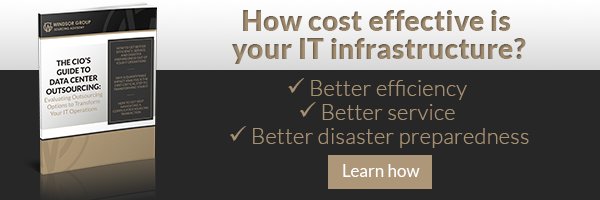 As the IT landscape continues to evolve and progress, so too does the need for CIOs to adapt to shifts in market and business demands. CIO’s play a large role in the strategic alignment of IT with business, overseeing the implementation of newer and more advanced infrastructure systems and applications, and effectively allocating and managing IT costs. CIOs are constantly studying market trends and identifying opportunities that will provide their enterprise with competitive advantages.
As the IT landscape continues to evolve and progress, so too does the need for CIOs to adapt to shifts in market and business demands. CIO’s play a large role in the strategic alignment of IT with business, overseeing the implementation of newer and more advanced infrastructure systems and applications, and effectively allocating and managing IT costs. CIOs are constantly studying market trends and identifying opportunities that will provide their enterprise with competitive advantages.
IT Trends
Internet of Things:
IoT can be described as a fast-growing collection of internet-enabled devices that relay information back to us, cloud-based devices, and each other. These devices range from vehicles and mobile phones to refrigerators and washing machines. In a nutshell, the IoT is a network of physical objects, or ‘things’, that use network connectivity to collect and exchange data. Today, there are roughly 100,000,000 endpoints that are actively generating data, and by 2020 that number is expected to grow up to 500,000,000.
Big Data:
Big data can be described as extremely large, or ‘big’, sets of structured and unstructured data that are analyzed to reveal patterns, market trends, and commonalities specifically related to human behaviors and interactions. As technologies have advanced and modern conveniences, such as smart phones, have surfaced, there has been a dramatic increase in the amount of data that has become available. However, this increase has only scratched the surface compared to the data that will be available 5 years from now.
How They Relate:
As IoT grows, so does big data. In other words, the continual rise of the IoT will create a substantial increase in the amount of available data, which ultimately ‘feeds’ big data. Meaning, enterprises have the ability to capture, store, and analyze more data than ever before, and frankly, more data than most enterprises have the bandwidth to handle in-house.
The Impact IoT and Big Data Will Have
The impact of the IoT and big data is two-fold. Firstly, the effect that it will have on the IT industry as a whole is tremendous. The growth levels that we’ll see in the IoT and big data will provide enterprises with more data, more accurate data, and more detailed and applicable data than ever before. Not only will this deliver greater levels of visibility and insight to enterprises, it will also allow them to leverage this data to make more effective and well-informed strategic decisions.
Secondly, although this increase in the IoT and big data will offer enterprises with more intelligence, it will also require substantially more resources to effectively manage and analyze; and in most cases, it will require employing external resources. IT budget constraints don’t allow CIOs to go out and hire the necessary personnel to accommodate these demands in-house. As an alternative, CIOs look to reduce legacy support costs to free up in-house resources and budget to focus on higher value projects. Employing an IT sourcing advisor is a great way to eliminate some of the undoubtable stress and frustration that occurs during a major decision-making process. IT sourcing advisors are able to offer the strategic insight, consultation, and support to ensure that the necessary steps are taken to effectively identify, evaluate, and choose the provider, or providers, that offer the greatest amount of support and benefit to a given organization.


